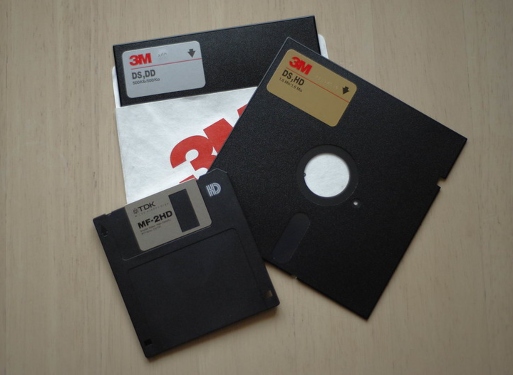Twenty years ago, many companies providing lifelong learning services bet heavily on e-learning, a learning modality that, served and controlled by a PC connected to the Internet, seemed to have as a reference the programmed, printed teaching of decades ago. Becoming online learners was a decisive step forward in the already inexcusable lifelong learning; a step forward in tune with the arrival of Information and Communication Technologies (ICT), whose multimedia and interactivity potential was extraordinarily suitable.
This modality of individual learning with a computer was not new. At the end of the 1980s – which was still the offline Information Technology (IT) stage – we were familiar with Computer Assisted Teaching (CA), recorded on those forgotten 5-inch floppies. In fact, in the eighties, teachers already possessed authoring software, simple tools that allowed them to design and produce didactic material with a modest dose of interactivity and multimedia presence.

On the other hand, since the Internet became available, we have been communicating with other Internet users and, of course, accessing linear information of interest (articles, reports, various documents), which of course enriches our body of knowledge. Today we would say that everything is on the Internet. But let’s go back twenty years, to the start of the online stage of programmed courses when, in addition to e-commerce or e-business, e-learning was already making waves in the business world.
E-learning system providers then began to collaborate with large companies in various sectors (telecommunications, energy, banking, transport, etc.) in setting up training platforms, a sort of virtual campus. Learners could access selected courses, generally of short duration, and had asynchronous (sometimes even synchronous) communication with the corresponding tutors; there were even discussion forums where users could exchange learning experiences.
The truth is that at the beginning of the century, perhaps because of the classroom attendance culture, or because the courses often seemed especially oriented to showcase the potential of ICT, many students dropped out before reaching the end (terms such as start rate and end rate were used to define the success of an e-learning project); but certainly online learning would become irreversible (today almost all of us are online learners, even in an informal way and sometimes even making serendipitous discoveries).

Perhaps about ten years ago – and, by the way, the first social networks were already emerging at that time -, the Internet began to be considered as the single great platform for individual learning; each user, while browsing and researching, could find a wealth of valuable information (in the form of articles, presentations, news, open courses, various studies) that could be translated into applicable knowledge, although they had to make a careful synoptic reading (contrasting different sources) to avoid false learning.
Nowadays, of course, it is worth noting the widespread use of learning initiatives that take advantage of the powerful tools available for videoconferencing and, in this regard, the number of online courses orchestrated to meet common expectations has multiplied. We should no longer relate e-learning only to programmed learning courses, but also to numerous other online possibilities, including e-learning master classes with synchronous communication and audiovisual support. There are indeed many options (new and traditional) available for continuous personal and professional growth, although we should certainly think much more about what to learn (knowledge, skills, strengths, attitudes, values, behaviors, etc.), and not so much about how to do it.
FOUR TRENDS OR MOVEMENTS TO CONSIDER
The 21st century arrived with the explosion of ICT and, in particular, with the development of the knowledge economy and the consequent need for lifelong learning. The lifelong learning movement had been consolidated, as well as other synergistic trends that prepared us for the 21st century, all in tune with the cultural changes underway. Individuals had to assume the leading role, the initiative, the leadership of their own continuous personal and professional growth.
We had to be able to handle the wealth of documentation available (on and off the Internet), and numerous universities around the world were preparing us for this emerging need – it was the information literacy movement. After becoming deeply aware of the need to be educated/informed, we then had to know how to search, evaluate what we found, contrast the information, and then translate it correctly into knowledge for its subsequent application, including possible connections, analogies, inferences and conclusions: it was no simple matter.
For the lifelong learner, information literacy and cognitive skills were expected to go hand in hand, the latter associated with the so-called critical thinking movement, a way of thinking that is autonomous, exploratory, penetrating, rigorous, open-minded and flexible; a way of thinking that is also careful in the search for and analysis of valuable and reliable information. Critical thinking is nuclear, essential, inescapable as developed human beings who reach their own conclusions, and it certainly contributes to avoiding erroneous learning.

We have already alluded to three trends or movements related to the protagonism of the individual in their learning trajectory, and it is also worth mentioning the knowledge management movement, which was equally solid in the 1990s. Knowledge management is a very broad concept -associated to the idea of intelligent organization- that includes the maximum use of all kinds of knowledge accumulated by each organization, and this includes the need to share the knowledge and experiences that each individual has acquired. The knowledge worker had to share his knowledge properly, making themselves easily understood; in effect, the subject needed informational skills, complementary to the informational skills already referred to. In other words, push and pull.
Perhaps we should now put more effort into combining these trends, among others, that have arisen in the past century and that have prepared us for this one – one of lifelong learning, information literacy, critical thinking and knowledge management.
Comments on this publication